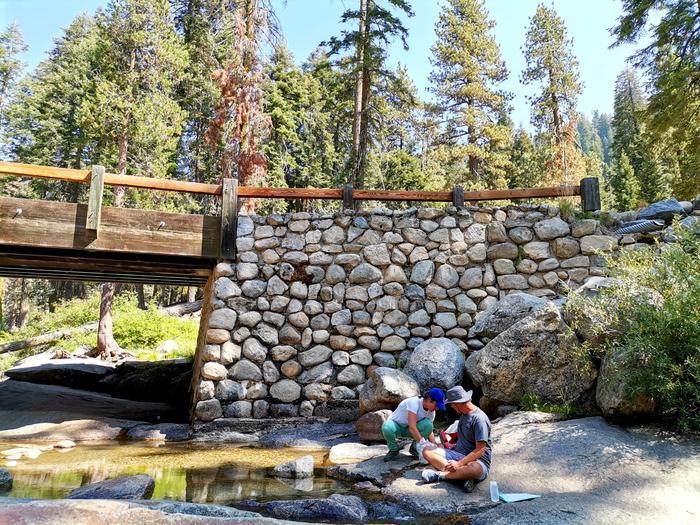New research shows that California’s Central Valley, known as America’s breadbasket, gets as much as half of its groundwater from the Sierra Nevadas. This is significant for a farming region that, in some parts, relies almost entirely on groundwater for irrigation.

Credit: Hoori Ajami/UCR
New research shows that California’s Central Valley, known as America’s breadbasket, gets as much as half of its groundwater from the Sierra Nevadas. This is significant for a farming region that, in some parts, relies almost entirely on groundwater for irrigation.
While it is easy to see above-ground reservoirs rise and fall with the rain and snow, aquifers are a natural water source hidden out of sight, in some cases hundreds of feet underground. “They are like giant bathtubs full of water and sediment,” said UC Riverside associate professor of groundwater hydrology Hoori Ajami.
Scientists have long recognized that the Sierras are a key water source for the Central Valley aquifer, but this new UC Riverside-led study is the first to quantify the groundwater contribution from the mountains. Published in the journal Water Resources Research, the study shows that contribution is as much as 53% in the southern Central Valley.
It isn’t just snow melt and rain-fed streams reaching into the low-lying aquifer. There are aquifers in the Sierras that appear to be discharging into the Central Valley aquifer as well.
“This study shows the degree of connectivity between the mountains and the valley is considerable” said Sandra Armengol, first author of the paper and former UCR postdoctoral researcher.
Because groundwater is difficult to see, it is also difficult to measure. The researchers used a multi-pronged approach to quantify where the Central Valley aquifer water was coming from.
In part, the study relied on U.S. Geological Survey samples of well water taken from the southern Central Valley as well as in the mountains. The UCR researchers then examined the chemistry of those samples levels of calcium, sulfates, sodium, radioactive, and stable isotopes to learn about the source of the water, as well as its age.
Carbon 14 and tritium are chemicals in the water that give researchers an idea how old something is. In particular, carbon 14 is also used in archaeology to give a sense of things that are tens of thousands of years old, while tritium will tell if something is younger than 50 years.
What the UCR team found is that the Sierra groundwater flowing into the Central Valley is very mixed in age. Some of the water was as young as 4 years old, some was roughly 102, and in some places the water was more than 40,000 years old. As such, it cannot be easily replaced once it is used.
“It takes a long time for precipitation to go through layers of sediment into aquifers and recharge the groundwater. If we keep pumping at current rates, we will significantly deplete our aquifers in the Central Valley,” Ajami said.
Because of the 2012 – 2016 droughts, people started pumping too much groundwater and this has accelerated sinking of the ground and impacted infrastructure such as dams and canals carrying surface water to the valley.
Former Governor Jerry Brown signed the Sustainable Groundwater Management act into law in 2014, which enforces development of groundwater sustainability plans for over-drafted basins and reduces undesirable results such as groundwater depletion and land subsidence. However, much more can and should be done to manage the groundwater supply effectively.
“If I want to know a sustainable pumping rate for an aquifer, I need to know how much water is coming in and how much groundwater is going out. As with your bank account, how much you spend depends on your income,” Ajami said.
This study was part of an effort to quantify that income, (aka recharge), and was funded by a National Science Foundation CAREER award. Ajami received the $630,000 award in 2020 for hydrology research, education, and outreach. She is planning additional studies to quantify the Sierra Nevada recharge more precisely.
“For overdrafted aquifers, including the Central Valley one, more detailed studies quantifying recharge rates are still needed,” Armengol said. “But we hope this work will aid in better management of this irreplaceable resource. So much of the food we eat depends on it.”
Journal
Water Resources Research
Article Title
Isogeochemical Characterization of Mountain System Recharge Processes in the Sierra Nevada, California
Article Publication Date
5-Jul-2024



